Selecting the appropriate equipment is the first step in fly fishing. This is a critical step that sets the stage for success and fun in the water. It can be difficult for novices to comprehend and select the necessary parts of a fly fishing equipment. This blog post attempts to streamline the procedure by providing a concise list of essentials for a novice angler’s gear. We’ll go over all the fundamentals you need to confidently get started, from picking the ideal rod and reel to picking the appropriate flies and accessories. Let’s examine the essential elements of a fly fishing kit for beginners so you may be prepared for your very first cast.
Best Fly Fishing Gear For Beginners
Choosing the Right Fly Rod for Beginners
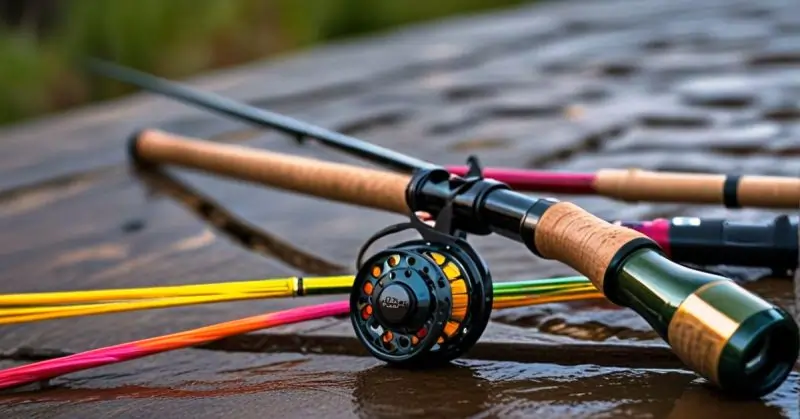
Introduction to the Ideal Fly Rod for Beginners
Selecting the right fly rod is a critical first step for any beginner in fly fishing. The ideal choice for those just starting out is typically a nine-foot, five-weight, medium to fast action rod. This combination offers versatility and ease of use across various fishing conditions.
Why a Nine-Foot, Five-Weight, Medium to Fast Action Rod?
- Versatility: The nine-foot length provides excellent balance and reach, making it suitable for a variety of fishing environments, from small streams to larger rivers.
- Weight: A five-weight rod is incredibly versatile, capable of handling most trout sizes, which are common targets for beginners. It’s heavy enough to cast larger flies yet light enough for delicate presentations.
- Action: Medium to fast action rods offer a good mix of power and flexibility. A medium action rod is more forgiving, making it easier for beginners to learn the timing of casts. A fast action rod, on the other hand, provides greater power for casting longer distances and dealing with windy conditions.
Tips on What to Look for When Purchasing Your First Fly Rod
- Build Quality: Look for rods made from durable materials like graphite, which offers a good balance between strength and flexibility.
- Comfort: Check the grip and handle of the rod. It should feel comfortable in your hands, as you’ll be holding it for extended periods.
- Warranty: Opt for brands that offer good warranty terms. Fly rods can be an investment, and a warranty can provide peace of mind against manufacturing defects.
- Brand and Reviews: Research different brands and read user reviews. Look for feedback on the performance and durability of the rods from other beginners.
- Price: Set a realistic budget. While it’s not necessary to buy the most expensive rod, investing in a decent-quality rod can significantly improve your learning experience and enjoyment.
- Expert Advice: Don’t hesitate to ask for advice at your local fly shop. Experienced anglers can provide valuable insights and help you find a rod that suits your specific needs.
Selecting a Fly Reel for Beginners
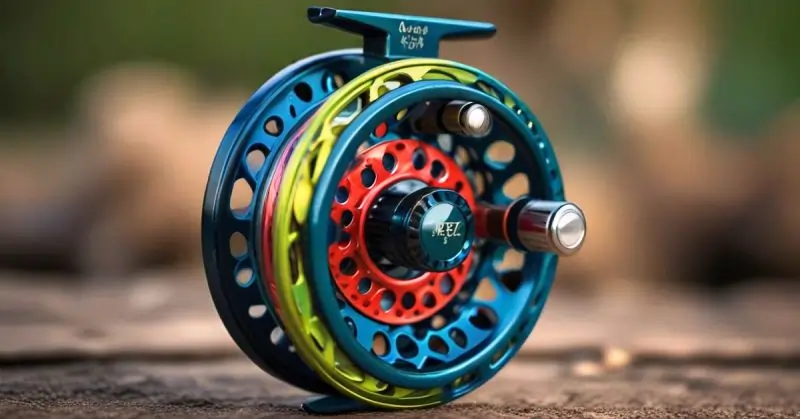
Introduction to the Importance of a Good Fly Reel
A fly reel is not just a storage place for your line; it plays a crucial role in fly fishing by helping to balance the rod and manage line during casting and retrieving. Choosing the right fly reel enhances your control and enjoyment of the sport.
Benefits of a Reel with a Disk Drag System
- Consistent Drag Pressure: Disk drag systems offer smoother and more consistent drag pressure, which is essential for protecting light tippets against large fish. This system helps in evenly absorbing the shock of sudden pulls, reducing the risk of line breakage.
- Adjustability: Disk drag reels allow for precise adjustments. You can fine-tune the resistance according to the fish’s strength and the current conditions, giving you greater control during the fight.
- Durability: These systems are generally more durable and reliable. They perform better in a variety of weather conditions and require less maintenance, making them a worthwhile investment for both beginners and experienced anglers.
Advice on Selecting a Fly Reel for Best Value
- Match the Reel to Your Rod: Ensure the reel weight complements your rod’s weight and balance. This compatibility is crucial for achieving optimal casting performance.
- Consider the Environment: Choose a reel that suits the type of fishing you plan to do. Freshwater reels are different from saltwater reels, the latter often having more corrosion-resistant materials and construction.
- Read Reviews and Compare Prices: Spend time researching different brands and models. Online reviews and forums can provide insights into the reel’s performance and reliability.
- Don’t Overbuy: While high-end reels can be appealing, they are not necessary for everyone, especially beginners. Look for a reel that offers good functionality with a reasonable price tag.
- Check for Warranty: A good warranty can be a sign of a manufacturer’s confidence in their product. It also provides peace of mind that you’re covered in case of defects.
- Seek Expert Advice: When in doubt, consult with experienced anglers or staff at specialty fishing stores. They can provide personalized recommendations based on your specific needs and budget.
Understanding Fly Line and Backing
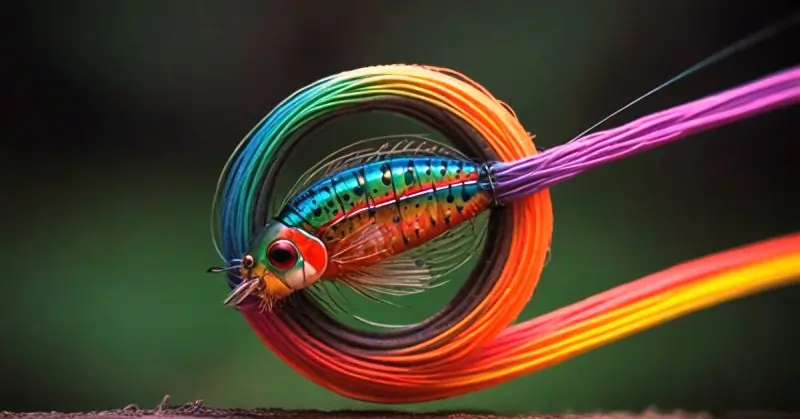
Introduction to Fly Line and Backing Basics
Fly line and backing are essential components of a fly fishing setup, each serving a distinct purpose in the sport. Understanding these elements is crucial for assembling a functional fishing rig that can handle various fishing situations effectively.
Purpose of Fly Line and Backing
- Fly Line: The fly line is responsible for delivering the fly to the target. Its weight and design enable it to cast the lightweight flies used in fly fishing. Fly lines come in different weights and profiles to suit various fishing conditions and species.
- Backing: Backing is a strong, thin line that attaches directly to the reel. Its primary purpose is to fill up the spool so that the fly line retrieves more quickly and to provide additional line for fighting fish that make long runs. Backing is crucial for not running out of line in situations where a large fish pulls all the fly line off the reel.
Selecting the Right Fly Line and Backing
- Choosing Backing: For most freshwater fishing situations, 20-pound Dacron backing is sufficient. It offers a good balance between thin diameter and strength, allowing anglers to fit a substantial amount of backing on the reel without sacrificing performance.
- Choosing Fly Line: For beginners, a five-weight, weight-forward floating line (WF-5-F) is recommended. This type of line is versatile and easier to cast, making it suitable for a wide range of conditions and species. The weight-forward design means that the bulk of the mass is near the front of the line, which helps to load the rod more efficiently during the cast.
How This Setup Optimizes Your Fly Rod and Improves Casting
- Complementary Setup: Pairing a nine-foot, five-weight fly rod with a WF-5-F line creates a balanced system that enhances handling and control. The rod’s length and action are well-suited to manage the dynamics of this line type, providing a good mix of power and delicacy in casts.
- Enhanced Casting Efficiency: The weight-forward line complements the medium to fast action of the rod, allowing for smoother and more powerful casts. The configuration helps beginners make longer casts with less effort and more accuracy. It also facilitates easier handling of the line on the water, whether mending, feeding line, or retrieving.
Leaders and Tippet: The Connection Essentials
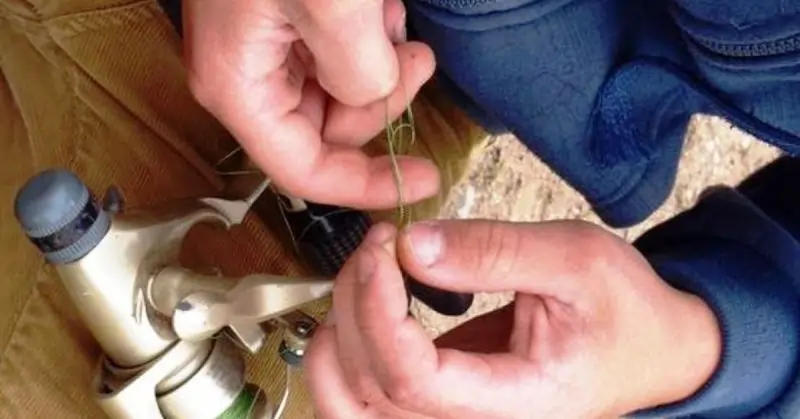
Introduction to Leaders and Tippets
In fly fishing, leaders and tippets are crucial components that connect the fly line to the fly. They play a significant role in ensuring your setup is stealthy and effective, allowing the fly to be presented naturally to the fish.
Understanding Leaders and Tippets
- Leaders: A leader is the clear material that is connected directly to the end of your fly line. It is typically tapered, meaning it is thicker at the fly line end and thinner at the end where the tippet attaches. The leader’s primary purpose is to transfer energy smoothly from the fly line to the fly, ensuring your cast lands softly and accurately.
- Tippets: The tippet is a length of thin line attached to the end of the leader, to which the fly is tied. It is usually the thinnest part of the line assembly, designed to be nearly invisible to fish. The tippet needs to be strong enough to hold the fish but thin enough to remain concealed.
Recommended Assortment for Various Fishing Conditions
- Leaders: For most trout fishing scenarios, having a selection of 3X, 4X, and 5X leaders will cover a range of situations. These numbers refer to the diameter and strength of the leader. Lower numbers indicate thicker and stronger leaders suitable for larger flies and bigger fish.
- Tippets: Complementing your leaders, you should have tippets in sizes 4X, 5X, and 6X. These sizes allow for versatility in targeting different sizes of fish and adjusting to clear or heavily fished waters where fish might be line-shy.
Choosing and Preparing Leaders and Tippets
- Match the Leader to the Fishing Conditions: Select a leader length and strength suitable for the type of water you are fishing. For example, use longer leaders in clear, slow-moving water where fish are more wary, and shorter leaders in turbulent or murky water.
- Selecting the Right Tippet Size: The tippet size should complement the size of the fly you are using. A general rule is to divide the fly size by 3 to get the appropriate tippet size (e.g., Size 12 fly / 3 = 4X tippet).
- Connecting Tippet to Leader: Use a surgeon’s knot or a blood knot to attach tippet to the leader. Ensure the knot is tight and trim the excess closely to avoid catching on weeds or debris.
- Preparing for Use: Before heading out, pre-tie several lengths of tippet material to your leaders and roll them up for quick changes on the water. This preparation can save valuable fishing time when conditions or fly choices change.
Choosing the Right Flies for Fly Fishing
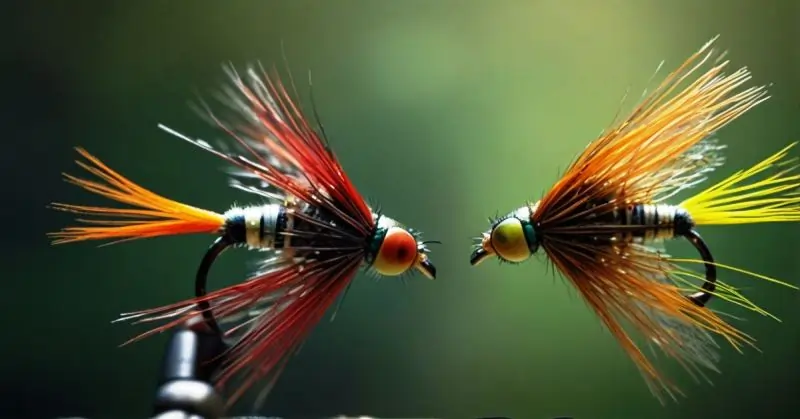
Introduction to Types of Flies
Fly fishing uses specifically designed flies that mimic the natural diet of fish to entice them to bite. Understanding the basic types of flies—dries, nymphs, and streamers—is crucial for effective fishing.
- Dry Flies: These float on the water surface and are designed to imitate adult insects that land or hatch on the water. They are most effective in calmer waters where fish are seen feeding on the surface.
- Nymphs: Nymphs sink below the water’s surface, representing immature insects before they mature into adults. They are used throughout the year and are especially effective when fish are deeper in the water column.
- Streamers: Streamers mimic small fish, leeches, or other larger prey. They are typically used in deeper or faster-moving waters and are known for attracting aggressive strikes from larger fish.
Recommendations for a Beginner’s Fly Assortment
For beginners, a well-rounded fly assortment should include a mix of the three primary types of flies to handle a variety of fishing scenarios:
- Basic Dry Flies: Adams, Elk Hair Caddis, and Parachute Blue Wing Olive. These cover a range of common surface-feeding scenarios.
- Essential Nymphs: Pheasant Tail, Gold Ribbed Hare’s Ear, and Prince Nymph. These are versatile and mimic a wide range of insect larvae.
- Key Streamers: Woolly Bugger and Muddler Minnow. These can be used in both still and moving waters and are effective for larger predatory fish.
Tips on How to Select Flies Based on Local Conditions and Target Fish Species
- Research Local Conditions: Before heading out, research or ask about what insects or prey items are common in the water you’ll be fishing. This local knowledge can guide your fly selection.
- Match the Hatch: If you observe insects hatching or fish feeding on the surface, try to match your dry fly to the size and color of the insects being eaten.
- Consider Water Depth and Speed: Use nymphs in deeper, slower waters where fish may be feeding below the surface. In fast-moving streams or rivers, a streamer might be more effective as it covers more water quickly.
- Target Specific Fish: Different species have different preferences. Trout often feed on insects, making dries and nymphs effective, while pike or bass might respond better to streamers that mimic small fish.
- Experiment: Don’t be afraid to try different flies to see what works best in your fishing spot. Sometimes, unexpected patterns can be surprisingly effective.
Additional Essential Gear for Fly Fishing
Introduction to Additional Gear
Beyond the basic rod, reel, and flies, several other pieces of equipment are essential for a successful and comfortable fly fishing experience. This section covers the importance and selection of waders and boots, fishing vests or packs, and various small but crucial accessories.
Waders and Boots
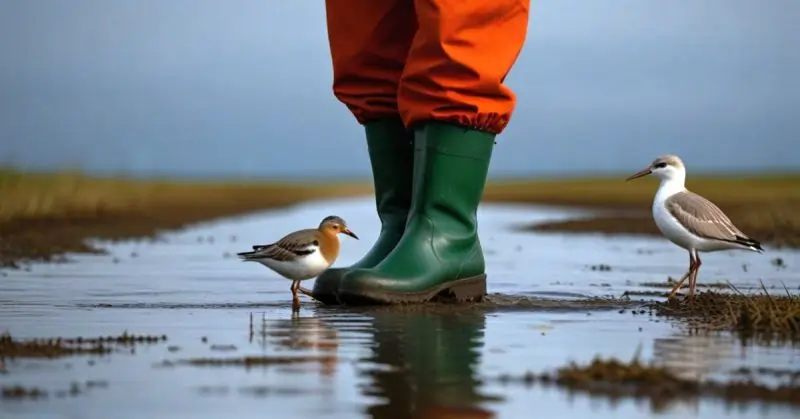
- Importance of Comfort and Fit: Waders and boots protect you from the elements and allow you to enter the water safely. It is crucial that they fit well and are comfortable, as you will be wearing them for extended periods. Poorly fitting waders or boots can lead to discomfort, hinder movement, and even pose safety risks in slippery conditions.
- Recommendations for First-Time Buyers:
- Waders: Look for breathable waders made from durable, waterproof materials like Gore-Tex or neoprene. Ensure they have a good fit—not too tight or too loose. Consider adjustable straps and belts for a more customized fit.
- Boots: Choose boots with sturdy, slip-resistant soles for stability on slippery surfaces. Ensure they are compatible with your waders (some boots are designed to be worn over stocking-foot waders). Comfort, support, and durability are key factors.
Fishing Vest or Pack
- Choosing a Functional Vest or Pack: A good fishing vest or pack is crucial for keeping your gear organized and accessible when you are in the water.
- Capacity and Layout: Ensure the vest or pack has enough pockets and compartments to store all your essentials like flies, tippets, leaders, and tools. Consider how the pockets are arranged—can you reach everything easily?
- Comfort and Fit: The vest or pack should fit well with adjustable straps to accommodate different body sizes and to be comfortable over waders.
- Material: Look for water-resistant or waterproof materials to protect your gear from getting wet.
Accessories
- Nippers and Forceps: Essential for cutting line and removing hooks. Nippers should be sharp and rust-resistant. Forceps are useful for more delicate operations, like removing hooks from fish or holding small items.
- Floatants and Strike Indicators:
- Floatants: Essential for keeping dry flies afloat. Look for environmentally friendly options that won’t leave residues on the water.
- Strike Indicators: Useful for nymph fishing as they help you detect subtle strikes. Choose indicators that are easy to attach and adjust, and that suit the type of water you’re fishing.
Assembling Your Fly Fishing Kit
Introduction
Assembling a fly fishing kit can be an exciting part of preparing for your adventures on the water. To ensure a successful start, it’s essential to carefully select and organize the gear that best suits your needs. Here’s a step-by-step guide to assembling your fly fishing kit, complete with checklists and resources for purchasing quality gear at reasonable prices.
Step-by-Step Guide to Assembling Your Fly Fishing Kit
- Start with the Basics:
- Fly Rod and Reel: Begin by attaching your reel to the rod. Ensure the reel is securely fastened and aligned with the rod guides.
- Fly Line, Backing, and Leader: Attach the backing to the reel first, followed by the fly line, and then the leader. Ensure all knots are secure and trimmed neatly to prevent any snags.
- Organize Your Flies and Tackle:
- Sorting Flies: Organize your flies into dry flies, nymphs, and streamers. Use a fly box with compartments or foam rows to keep them sorted and easily accessible.
- Additional Tackle: Place other items like split shots, indicators, and hooks into separate compartments or small containers within your tackle box or vest.
- Prepare Your Vest or Pack:
- Load Your Vest/Pack: Distribute the weight evenly across the vest or pack. Common items to include are your fly boxes, tippets, extra leaders, nippers, forceps, floatant, and strike indicators.
- Accessibility: Arrange frequently used items in the most accessible pockets and test the setup to ensure comfort and practicality when reaching for these items on the water.
- Waders and Boots:
- Check Fit: Before heading out, try on your waders and boots to ensure a comfortable and secure fit. Adjust straps and belts as needed.
- Safety Inspection: Inspect for any tears or damages that might need repair to avoid any mid-trip inconveniences.
- Final Adjustments:
- Safety Gear: Depending on your fishing location, consider additional safety gear like a wading belt or a personal flotation device.
- Practice Setup: Set up your rod and practice assembling and disassembling it to become familiar with the process.
Checklists and Resources for Buying Gear
- Checklists:
- A detailed checklist for each category of gear helps ensure you don’t miss anything essential. Include items like rods, reels, lines, waders, boots, vests, and all accessories.
- Use a checklist app or a printable PDF that can be easily accessed and marked off as you acquire each item.
- Resources for Buying Gear:
- Local Fly Shops: Great for personalized advice and often have competitive prices with the advantage of supporting local businesses.
- Online Retailers: Look for online sales and discounts on reputable sites. Read customer reviews to gauge the quality and suitability of the gear.
- Fly Fishing Shows and Expos: These events can offer deals on gear and provide an opportunity to speak directly with manufacturers about their products.
FAQ on “Best Fly Fishing Gear For Beginners”
Q- What size fly rod is best for beginners?
A- A nine-foot, five-weight rod is ideal for beginners, offering versatility across various fishing conditions.
Q- What is the easiest type of fly fishing?
A- Dry fly fishing is generally the easiest for beginners as it allows you to see the fly and fish reactions on the water’s surface.
Q- How do I choose a fly for fishing?
A- Select flies based on the local insects and fish diet; start with a variety pack of dry flies, nymphs, and streamers.
Q- How to pick a fly line?
A- Choose a weight-forward floating fly line that matches the weight of your fly rod, suitable for a variety of fishing scenarios.
Conclusion
In summary, the essential fly fishing gear for beginners includes a reliable rod, reel, appropriate fly line, and backing, along with well-chosen flies, waders, and a functional vest or pack. Investing wisely in these quality items not only enhances your learning curve but also significantly improves your overall enjoyment of fly fishing. As you gather your gear, remember that each piece is a step towards mastering this rewarding sport. Embrace the journey into fly fishing with the right tools, and look forward to many fulfilling experiences on the water.
